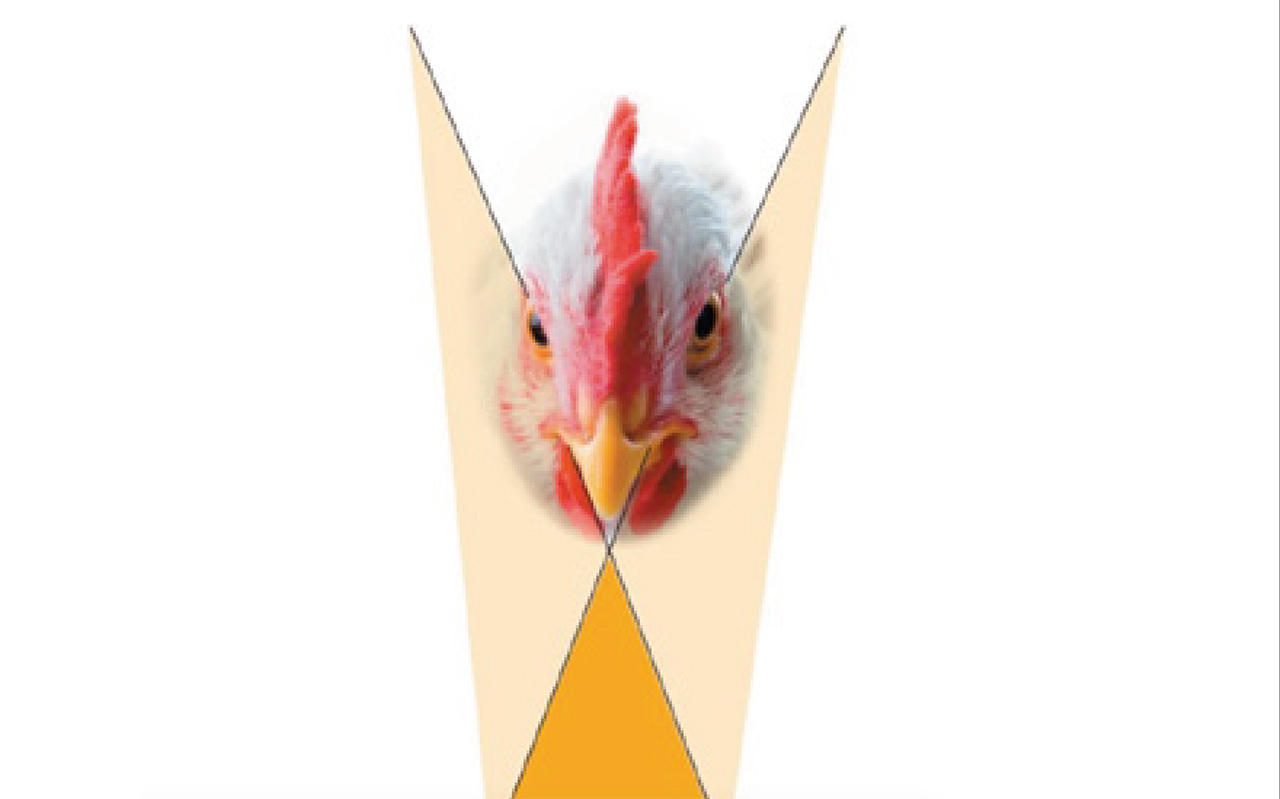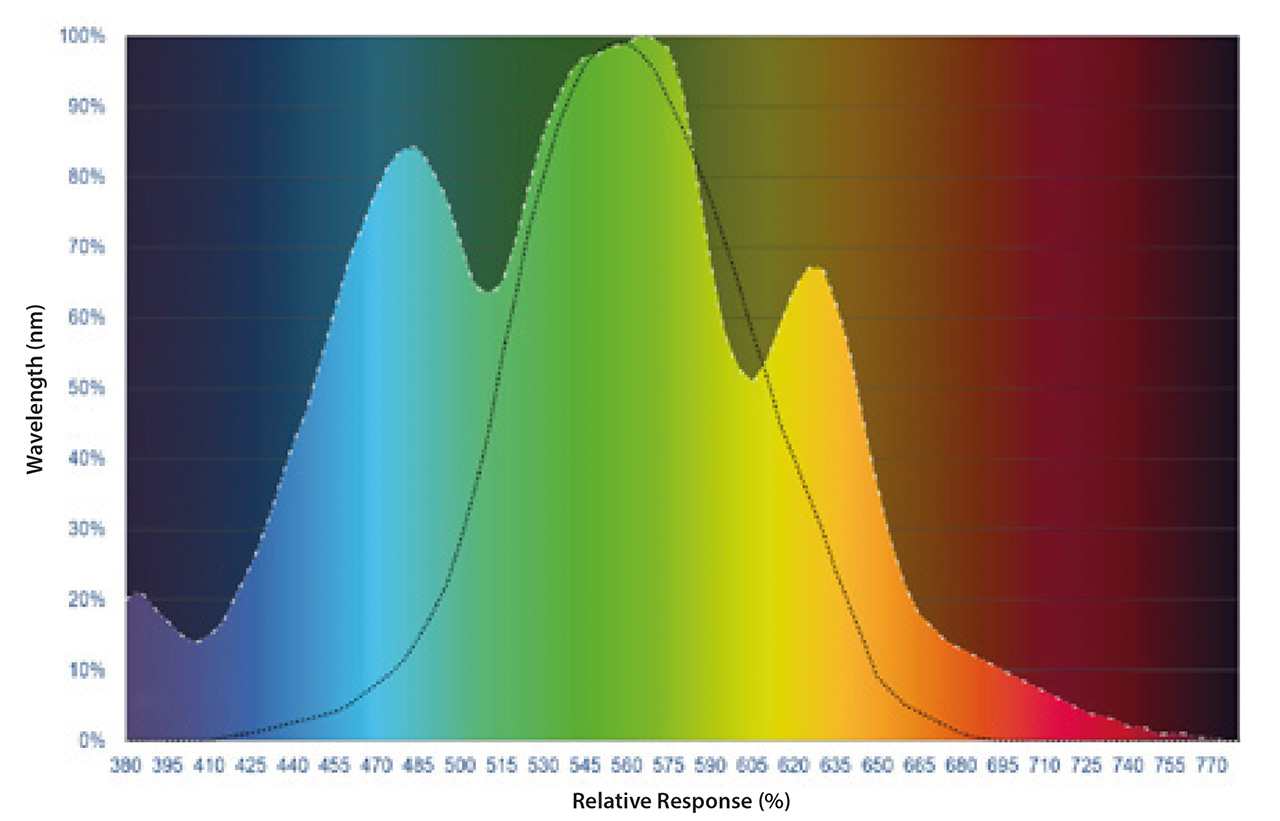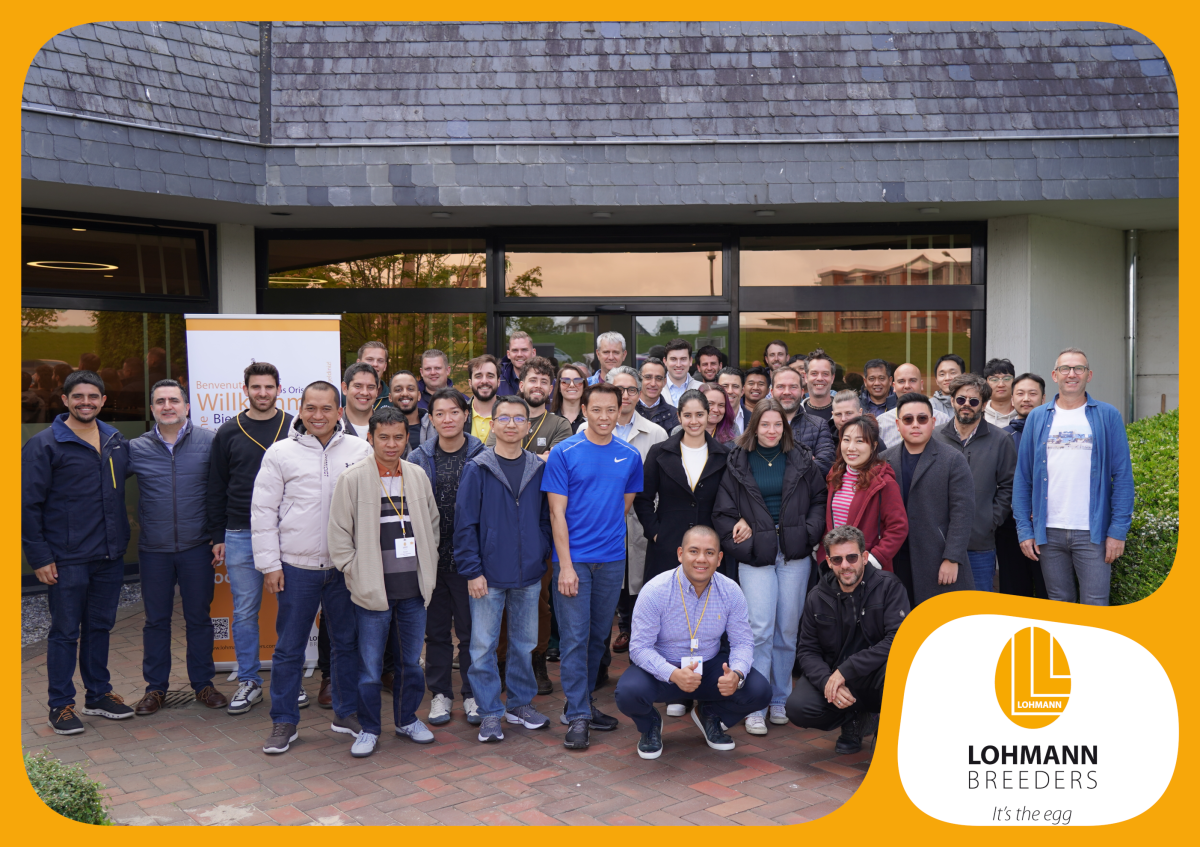The science of poultry vision is still relatively new and research is continuing. However, it is already known that birds have a highly developed visual system which functions in a very different way to human vision.
The main characteristics of poultry vison are as follows:
- Birds are able to move each eye independently and have panoramic vision of almost 300 degrees even without turning their heads. (Figure 1)
- In addition to the retinal light perception in the eyes, poultry can sense light through the pineal and hypothalamic glands.
- Poultry can see a wider range of the visible light spectrum (approx. 360-750 nm) than humans (approx. 410-730 nm). This ability allows birds to perceive Ultraviolet-A light. This important characteristic appears to be important for birds in recognising their environment, searching for the feed or mating behaviour. (Figure 2 & 3)
- Another primary difference in the visual system of birds compared to humans is the presence of a fourth retinal cone which enables layers to distinguish visual sequences of 150-200 images per second. Humans can only see up to approx. 25-30 individual images per second.
- Poultry can therefore perceive flickering light sources that operate in low frequency ranges. This causes negative effects on their behaviour such as nervousness, feather pecking and cannibalism. Flickering light sources include some fluorescent and energy-saving lamps. It is very important to realise that this flickering is invisible to humans.

Figure 1
Light sources
Different kinds of light sources such as incandescent lamps, tubular fluorescents, energy-saving lamps, and most recently LED lamps, are used in poultry facilities. Incandescent lamps have already been banned in many countries since they cannot efficiently convert electric power into light. Light sources such as LED lamps, which are more energy-efficient and longlasting, are therefore more widely used in modern poultry houses.

Figure 2
Regardless of the advantages and disadvantages of each light source some important basic facts must be considered when selecting light sources for poultry. » The frequency of the emitted light should be at least around 150 Hz to avoid flickering.
It is advisable to use poultry-specific light sources. These are expensive but generally adjusted to suit poultry vision in terms of light spectrum etc. In general, light sources which approximate the natural spectrum are recommended, especially for the production period.
–Depending on the light source, the light intensity could be perceived by poultry as far higher than by the human eye. Therefore, conventional Lux meters which are designed for human vision have limitations when used to measure the correct light intensity for birds. For example, they cannot detect UV-A light.
–A specific Lux meter for LEDs is required to measure the correct intensity of LED light.
–The light colour alone measured in Kelvin appears to be insufficient to evaluate the light spectrum of light sources, because it only reflects the wave length and not the whole spectrum including UV-A light. Aside from the light spectrum, a light source with warm-white colours between 2700-3000 Kelvin should be considered for poultry houses.
–Light sources for birds should be designed to be dimmable. Not all lamps are suitable for dimming, and dimming could cause flickering or reduce the lifespan of the lamps.
–Direct and uneven light and shadows should be always avoided. When using LED lamps, diffusers can be useful to avoid direct light.
–To avoid stress after transferring the pullets to the layer house, it is important to ensure the pullets are already adapted to natural daylight if they will be kept in open house facilities.
–Light sources should be designed for easy cleaning and disinfection in the poultry house.

Figure 3
Farhad Mozafar







